International Journal of Veterinary Science and Research
Genetic diversity and geographical distribution of strains of Mycobacterium tuberculosis complex in Ethiopia: Review
Mitiku wamile Arada*
Cite this as
Arada MW (2020) Genetic diversity and geographical distribution of strains of Mycobacterium tuberculosis complex in Ethiopia: Review. Int J Vet Sci Res 6(1): 087-092. DOI: 10.17352/ijvsr.000059In Ethiopia, tuberculosis (TB) is one of the major infectious diseases with wide spread geographic distribution and endemic nature, which has been well documented both in human and livestock of the country. TB in livestock has an important economic and public health significance although the actual prevalence of animal tuberculosis at the national level is yet unknown. Identification of the etiology of tuberculosis in human and different species of livestock has a paramount significance in order to understand the transmission pattern, the pathogenesis, and control of the diseases. So far, detection of animal TB in Ethiopia has been carried out most commonly on the basis of tuberculin skin testing, abattoir meat inspection and very rarely on bacteriological techniques. These diagnostic methods can not differentiate the specific species of Mycobacterium tuberculosis complex or other species /strains of Mycobacterium, hence utilization of advanced molecular techniques to characterize and genotype the causative agents is important. Genotyping of Mycobaterium species allows understanding the genetic diversity, transmission dynamics and evolutionary/phylogenic relationships of the isolates in different hosts of animal and human. The aim of this paper is, therefore, to review molecular genetic diversity and distribution of mycobacterial infection due to M.tuberculosis complex (mainly M.bovis, M.tuberculosis) and non-tuberculous Mycobacterium in Ethiopia in addition to highlighting the zoonotic significance of mycobacterial species originated from livestock and to show the feasible prevention and control options of tuberculosis in cattle and other animals.
Introduction
Tuberculosis (TB) is a bacterial disease caused by Mycobacterium tuberculosis complex (MTBC), which is a leading cause of death worldwide. The major species of MTBC are M. africanum, M.canettii, M.microti, M.bovis, M.tuberculosis [1]. The members of M.tuberculosis complex are characterized by 99.9% similarity at the nucleotide level and identical 16S rRNA sequences but differ widely in terms of their host tropisms, phenotypes, and pathogenicity.
Ethiopia is one of the 22 high burden countries with high annual TB incidence of 247 cases/100,000 population in 2012 [2]. M. tuberculosis is the most common cause of human TB, but an unknown proportion of cases are due to M. bovis. Human TB caused by M. bovis (bovine tuberculosis; BTB) is clinically indistinguishable from TB caused by M. tuberculosis and can only be differentiated by laboratory methods [3]. Specific data on zoonotic BTB transmission is very scarce in the developing world because the diagnosis of TB most often relays on sputum microscopy only. However, with recent advancement in molecular methods for characterization of M. tuberculosis complex including spoligotyping [4], deletion typing [5], MIRU-VNTR methods [6] identification of members of M. tuberculosis complex at species strain level has been possible. One of the members of M. tuberculosis complex, M. bovis has been considered as the classical causative agent of BTB in cattle; however, the organism has also been isolated from different species of livestock, wildlife and also from human which become a serious public health problem [1,7].
Molecular strain typing (genotyping) has contributed significantly to the understanding of TB epidemiology and has helped to improve TB control by providing information on transmission dynamics, determining the importance of reactivation versus exogenous re-infection, investigating/confirming outbreaks, confirmation of laboratory cross-contamination and to identify the clonal spread of successful clones, including multi-drug-resistant ones [8,9]. Furthermore, molecular typing has revealed that the MTBC has a diverse population structure with manifold lineages that show large differences in their geographical occurrence. Several typing techniques have been used to characterize isolates of MTBC including IS6110 restriction fragment length polymorphism (RFLP), spoligotyping and MIRU-VNTR methods as the most frequently used [4,5]. Genotyping of MTBC is used to identify and distinguish MTBC into distinct species, strains lineages and/or sublineages that are quite useful for TB tracking and control and examining host-pathogen relationships [8].
In Ethiopia, a number of researches have been carried out based on molecular typing of Mycobacterium species isolated from infected livestock and human and this information has been utilized for the mapping of the molecular epidemiology of M. tuberculosis complex (including M. bovis and M. tuberculosis) in the country. Risk factors such as consuming raw milk, meat, blood, and close physical proximity of infected animals with their owners in the same house or in the barns do exacerbate the chance of spread of tuberculosis as zoonosis in Ethiopia [10]. Hence, in the existence of potential risk factors and circulation of Mycobacteria species in different livestock and humans as a cause of tuberculosis and understanding the genetic diversity and their geographic distribution of M. tuberculosis complex in the country would help to establish the prevailing molecular epidemiology and transmission pattern of the species/strains of MTBC in Ethiopia.
Therefore the objectives of this review paper are:-
➢ To describe the molecular genetic diversity of Mycobacteria species (M. tuberculosis, M. bovis and NTM) in livestock of Ethiopia.
➢ To indicate the geographic distribution of the Mycobacteria species/strains in the livestock of Ethiopia.
➢ To assess the significance and impact of this molecular epidemiological knowledge in understanding the transmission dynamics and control of mycobacterial infections.
Overview of Mycobacterium tuberculosis complex
General description of genus Mycobacterium
Mycobacterium is a pathogenic bacterium that belongs to the class Actinomycetes, order Actinomycetales and family Mycobacteriaceae. The genus Mycobacterium includes.
M.tuberculosis complex and M. avium complex, other pathogenic Mycobacterium and numerous species of saprophytic mycobacteria present in soil and water. Mycobacterium is obligate aerobes, non-spore forming and non-motile bacilli, and is 0.6 –1.0 × 1.0 – 10 µm in size Figure 1 [5,8].
Mycobacteria are resistant to decolorization due to its thick cell wall and high lipid content [12]. This property is termed acid fastness, so that Mycobacterium is commonly referred to as acid-fast bacilli. In contrast, these microorganisms are not readily stained with the Gram stain method and are considered weakly Gram-positive. The rods tend to stain irregularly and often have a beaded appearance. They are slow growers, i.e. they require more than 7 days forming colonies when sub-cultured on Lowenstein-Jensen media. M. tuberculosis forms rough colonies on Lowenstein-Jensen solid media. Colonies formed by M. bovis are smooth with irregular edges on egg based media [13]. The genus Mycobacterium is most closely related to the genera Rhodococcus and Nocardia and all three genera have a similar cell wall type and are acid fast but comparatively Mycobacterium have characteristics of slow growth rate [14].
Morphology and biochemical composition
Mycobacterium is a fastidious, slow growing, lipid-rich, hydrophobic and acid fast bacterial rod shape which resists decolorization with acid alcohol. It has no outer membrane; rather it has a cell wall made up of different macromolecules, namely peptidoglycans, arabinogalactan, mycoclic acid and lipopolysaccharide or lipoarabinomannan (LAM) which is anchored plasma membrane (Figure 2). Mycoclic acid is the major component of the cell wall envelope, greater than 50% by weight, a significant number which are responsible for their resistance to humoral defense mechanism, disinfectants, acids and alkalis. The staining characteristic of M. tuberculosis is due to the mycoclic acid which resists decolorization by acid alcohol Figure 2.
Genotyping of Mycobacterium tuberculosis Complex
The genomics of Mycobacterium tuberculosis complex have proved considerably more difficult to elucidate than those of many other bacteria. This is due to the difficulties presented by extremely slow growth, the unique cell wall composition of the organism, the need for protection of laboratory personnel and a paucity of cloning vehicles [16]. For many years, it was thought that human tuberculosis evolved from the bovine disease by adaptation of an animal pathogen to the human host. This hypothesis is based on the property of M. tuberculosis to be almost exclusively a human pathogen, whereas M. bovis has a much broader host range.
However, studies based on comparative molecular analysis of the genome of M. tuberculosis and M. bovis unambiguously showed that M. bovis has undergone numerous deletions relative to M. tuberculosis and also revealed that no new gene clusters that were confined specifically to M. bovis. This result indicates that the genome of M. bovis is smaller than that of M. tuberculosis. Hence, it is now agreed that M. bovis is the final member of a separate lineage that branched from the progenitor of M. tuberculosis isolates. Successive loss of DNA may have contributed to clonal expansion and the appearance of more successful pathogens in certain new hosts [5] (Figure 3).
Molecular genotyping has advanced the understanding of MTBC transmission and is helpful in identifying transmission links in a livestock. IS6110-based restriction fragment-length polymorphism (RFLP) analysis is often used for genotyping of MTBC. However, molecular characterization using RFLP method is laborious and requires culture for several weeks to obtain large quantities of genomic DNA. In addition, RFLP has poor discriminatory power for isolates with low numbers of insertion sites such as M. bovis [17]. Spoligotyping is a rapid, polymerase chain reaction (PCR)-based method for genotyping strains of the MTBC. It is easier to perform and requires smaller amounts of DNA than RFLP analysis but its discriminatory capacity is inferior to RFLP. Spoligotyping is useful in discriminating strains with low IS6110 copy numbers such as M. bovis and it can be performed on nonviable organisms. The clinical usefulness of spoligotyping is determined by its rapidity, both in detecting causative bacteria and in providing epidemiologic information on strain identities [4].
Mycobacterial interspersed repetitive units-variable number tandem repeats ((MIRU-VNTR) is another PCR-based method that is easily reproducible and does not require extensive DNA purification. MIRU-VNTR has become a major method for rapid, high-resolution genotyping of M tuberculosis complex isolates. The method relies on PCR amplification of multiple loci (12, 15 or 24 loci) using primers specific for the flanking regions of each repeat locus and on the determination of the sizes of the amplicons, which reflect the numbers of the targeted MIRU-VNTR copies. Moreover, the results are expressed as numerical codes and are therefore easy to compare and exchange between laboratories [8,9].
Bovine Tuberculosis (Btb) in Ethiopia
BTB is a widespread and endemic disease of cattle in Ethiopia. M. bovis is the causative agent of tuberculosis in cattle. M. bovis is a member of the M. tuberculosis complex, which also includes M. tuberculosis, M. caprae, M. microti, M. africanum, M. canetti, M. pinnipedii, and M. bovis Bacillus Calmette–Guérin (BCG) [1]. Unlike most of the organisms in this group, M. bovis has a broad host range including; cattle, cervids, badgers, humans, and many other animals [1,18].
Several prevalence studies have been performed recently showed that BTB is endemic in cattle; however, prevalence varies depending on the geographical areas, breeds and husbandry practices. Abattoir and dairy farm studies from central Ethiopia have reported prevalence between 3.5 and 13.5% and locally in peri-urban Addis Ababa up to 50% [19-21]. In contrast, lower prevalence of 0.9% was reported in traditionally kept zebu cattle [22]. Other livestock than cattle have also been investigated. Based on gross pathology, prevalence of 5–10% was reported in camels slaughtered at Dire Dawa abattoir in eastern Ethiopia and in Addis Ababa abattoir .The observed variability of BTB disease frequency in Ethiopia might well be influenced by different livestock production systems (rural/pastoral/peri-urban) and different geographic and climatic contexts. Transmission of BTB seems to be higher in intensive peri-urban settings when compared to extensive rural and pastoral areas [23,24].
Genetic diversity and geographical distribution
In Ethiopia a number of molecular epidemiological studies on BTB in livestock were carried out in different regions of the country [19,20,24,25]. According to Berg, et al. [20] a total of seven different spoligotypes were identified, of which SB0133, SB1476, and SB1176 were more prevalent. SB0133 predominates in Jinka but it also represented in AddisAbaba, Gimbi and Woldia. SB1476 is the most common pattern in both Gimbi and Gonder but it was found in Jinka and Butajira. SB1176 is the most prevalent among the samples from Addis Ababa but can also be seen Butajira, Gonder and Woldiya. The remaining four spoligotypes patterns, SB0134, SB1488, SB1489 and SB1477, are all highly related to SB0133, and isolates with these patterns were mostly collected from Addis Ababa or Jinka abattoirs. The largest diversity of M. bovis strains was found in Addis Ababa abattoir with five different spoligotypes , likely reflecting the wide geographical area (Figure 4) from which cattle were sourced [20].
Sheep and goat tuberculosis in Ethiopia
TB in goats and sheep is caused by members of M. tuberculosis complex predominantly by M. bovis and M. caprae and few caused by M. tuberculosis. The overall animal prevalence of TB in small ruminants was 0.5% (95% CI: 0.2%–0.7%) at ≥4mm and 3.8% (95% CI: 3%–4.7%) at cutoff ≥2mm [26]. Caprine tuberculosis (TB) caused mainly by M. bovis and M. caprae poses a risk to goat health and production in developing world .Goats may become infected with M. bovis when sharing pastures with infected cattle, at watering points, market places and shared night shelters Figure 5.
Genetic diversity and geographical distribution
Mycobacteriological culture and molecular characterization of isolates from goats resulted in isolation of M. tuberculosis strain SIT149 [26]; SIT53 [27] and non tuberculous mycobacteria as causative agents of tuberculosis and tuberculosis like diseases in goats, respectively. The isolation of Mycobacterium tuberculosis in goats suggests a potential transmission of the causative agent from human. The SIT149 strain of M. tuberculosis is a dominant strain in Ethiopia and it was a common isolate in human pulmonary TB patients from the same Afar Pastoral Region. The isolation of the SIT53 strain of M. tuberculosis from goats suggests transmission from humans [27].
Camel tuberculosis in ethiopia
Tuberculosis caused by M. bovis is the most common form of tuberculosis in domestic camels. The prevalence of camel TB was 10.04% (91/906) on the basis of pathology [24] . Tuberculosis as a zoonosis from camel to human also plays an important role among nomadic people where milk and milk products are consumed raw [28]. The occurrences of TB lesions in camels were relatively higher in the younger and older camels than other age groups. Older animals are affected by TB which could be due to the fact that older animals have weaker immune system. The higher frequency of lesion in younger camels could be due to the less developed immunity [29] Young camels can also be easily infected with higher doses of mycobacteria via colostrums from infected camel in a similar way, as it occurs in cattle.
Genetic diversity and geographical distribution
Molecular epidemiological studies on Camel tuberculosis indicated that one of the strains which caused a generalized disseminated TB in camel was SB0133 [24], whereas the other strain was SB1953 which has been recently reported to the database. In Ethiopia, a number of studies reported new strains with specific spoligotype pattern in cattle. On the other hand, the isolation of SB0133 M. bovis strains in the present study from camel of pastoral area of Ethiopia is in line with the isolation of this strain from cattle of southern Ethiopia [20]. The majority of camel TB lesions were caused by NTM [24]. On the other hand, Gumi [25] have characterized M. tuberculosis strain SIT149 using spoligotype from disseminated generalized TB cases of camel and NTM as a causative agents of camel TB in south east pastoral camels of Ethiopia [25].
Zoonotic tuberculosis in Ethiopia
In developing countries, like Ethiopia, TB is widely distributed. The proportion of which BTB contributes to the total of tuberculosis cases in humans. It depends on the prevalence of the disease in animals, socioeconomic conditions, consumer habits, practiced food hygiene and medical prophylaxis measures. The primary bacterium that causes TB in humans is M. tuberculosis. In countries where BTB in cattle is still highly prevalent, pasteurization is not widely practiced and/milk hygiene is insufficient. About 10% to 15% of human tuberculosis is considered to be caused by BTB. M. bovis can enter human hosts through ingestion, inhalation or direct contact with mucous membranes or broken skin. Milk is still regarded as the principal vehicle for transmission to humans in countries where bovine tuberculosis is not controlled. Ingestion of contaminated milk or other dairy products is more often associated with scrofula, abdominal tuberculosis and other extra-pulmonary forms of the disease [31]. Because of the ability of BTB to infect humans and animals, its control is more difficult. Human immunodeficiency virus (HIV) infection has created a special niche for M. tuberculosis complex in humans as a result of the defect/reduction in cell mediated immunity. M. tuberculosis still responsible for most cases of death due to infectious diseases after HIV. The incidence of pulmonary tuberculosis caused by M. bovis is higher in farm workers than in urban inhabitants [32]. In rural areas of Ethiopia most people drink raw milk and do have extremely close attachment with cattle (such as sharing shelter) that intensifies the transmission and spread of BTB [10]
Prevention and control
The basic strategies required for control and elimination of bovine tuberculosis are well known and well defined. However, because of financial constraints, scarcity of trained professionals, lack of political will, as well as the underestimation of the importance of zoonotic tuberculosis in both the animal and public health sectors by national governments and donor agencies, control measures are not applied or are applied inadequately in most developing countries [3]. Cattle should not be treated at all and as such farm animals with tuberculosis must be slaughtered (culled) [33]. This is because the risk of shedding the organisms, hazards to humans and potential for drug resistance make treatment controversial. As this disease is primarily transmitted from cattle to humans in milk, control of human infection can be achieved by pasteurization and control of bovine tuberculosis. Testing of cattle with an intradermal tuberculosis test (or by inspection at slaughter), combined with removal or quarantine of infected herds and pasteurization of milk, has proven very effective in reducing the incidence of M. bovis infection in humans. Elimination is complicated by the several wildlife reservoirs of M. bovis present in most countries of the world. However, practical elimination of human infection can be achieved with a control program targeting only domestic animals [34]. Milk should be pasteurized or effectively treated with heat prior to human consumption or further processing, as this is the generally agreed critical and effective control measure to prevent transmission of zoonotic tuberculosis through milk.
There should be an increased enlightenment of at-risk individuals and the public on the possible risks of M. bovis infection in man. Farmers and other occupationally at-risk individuals should be required to adopt appropriate measures to minimize exposure of employees and farm visitors to infections that can be transmitted to humans from animals. Also, the role of wild fauna in the epidemiology of tuberculosis in livestock and humans need not be ignored, as they have been reported to serve as a reservoir of the pathogen. Animal husbandry practices should be improved upon to reduce contact between domestic livestock and wild ruminants especially during grazing. Vaccination is practiced in human medicine, but it is not widely used as a preventive measure in animals [35-37].
Conclusion and recommendations
Tuberculosis (TB) is an infectious, granulomatous disease caused by acid-fast bacilli of the genus Mycobacterium. Bovine TB is still a significant zoonosis in many parts of the world. Genotypic diversity of M. tuberculosis complex (MTBC) is important to understand its epidemiology, host adaptation and clinical phenotypes. The development of molecular tools has added a new dimension to the classical epidemiology of tuberculosis and greatly enhanced understanding of the complex transmission dynamics within populations and between hosts. Spoligotyping appears to have the specific characteristics needed to satisfy these issues of epidemics and tuberculosis transmission. This method permits the concomitant identification and differentiation of MTBC strains and avoids the timing problems associated with the slow growth of these bacteria. There is molecular evidence for the widespread distribution of M. bovis in the cattle population in Ethiopia. It also demonstrated a relatively high degree of genetic polymorphism of the isolates. Clustering of specific strains of isolates suggests circulations of the strains in the different part of the country. The existence of potential inter-species transmission of the strain among livestock of pastoral area, isolation of M. tuberculosis in goat suggests transmission from human to animal. Molecular genetic studies on Mycobacteria species isolated from TB patients in Ethiopia, human zoonotic tuberculosis is more common in pastoral regions of the country.
Based on the above conclusion, the following points are recommenede:
➢ Further research in identifying the circulating strains of MTBC in various hosts and their distribution in geographical area of the country should be undertaken.
➢ Future molecular mapping of the isolates to elucidate strain diversity in detail within Ethiopia is recommended.
➢ Understanding of the transmission dynamics of the different strains of mycobacteria should also be emphasized to design and assess the BTB control intervention both in livestock and human population.
➢ Creating awareness among the people, to meet the standard hygienic requirement and to improve husbandry practices is of paramount importance.
➢ Auditing of the ante-and post-mortem inspection of carcasses at abattoirs regarding the control and removal, from the food chain, of carcasses or parts thereof, considered unfit for human consumption because of the presence of tuberculosis, or for other reasons, is recommended.
- Pal M, Boru BG (2012) Zoonotic significance of Mycobacterium bovis infections . J Nat Hist 8: 86-89. Link: https://bit.ly/2ARTBTI
- WHO (2013) Global tuberculosis Report 2013, WHO/HTM/TB/2013.11,WHO Press, Geneva, Switzerland Link: https://bit.ly/3hd8GQh
- Cosivi O, Grange JM, Daborn CJ, Raviglione MC, Fujikura T, et al. (1998) Zoonotic tuberculosis due to Mycobacterium bovis in developing countries. Emerg Infect Dis 4: 59–70. Link: https://bit.ly/2Uvfi2M
- J Kamerbeek, Schouls L, Kolk A, van Agterveld M, van Soolingen D, et al. (1997) Simultaneous detection and strain differentiation of Mycobacterium tuberculosis for diagnosis and epidemiology. J Clin Microbiol 35: 907–914. Link: https://bit.ly/2An9Hoj
- Brosch R, Gordon SV, Marmiesse M, Brodin P, Buchrieser C, Eiglmeier K, et al. (2002) A new evolutionary scenario for the Mycobacterium tuberculosis complex. PNAS 99: 3684–3689. Link: https://bit.ly/3cOUSYU
- Supply P, Allix C, Lesjean S, Cardoso-Oelemann M, Rusch-Gerdes S, et al. (2006) Proposal for standardization of optimized mycobacterial interspersed repetitive unit-variable-number tandem repeat typing of Mycobacterium tuberculosis. J Clin Microbiol 44: 4498-4510. Link: https://bit.ly/3cLZDTf
- Pal M (2007) Zoonosis.2nd Edition. Satyam publishers, Jaipur, India 145-147.
- Gagneux S, Small PM (2007) Global phylogeography of tuberculosis and implications for tuberculosis product development. The Lancet Infect Dis 7: 328–337. Link: https://bit.ly/3fb7RpA
- Allix C, Supply P, Fauville-Dufaux M (2004) Utility of fast mycobacterial interspersed repetitive unit-variable number tandem repeat genotyping in clinical mycobacteriological analysis. Clin Infect Dis 39: 783-789. Link: https://bit.ly/2XMeqsC
- Girmay G, Pal M, Demeke Y, Weldesilasse G, Equar Y (2012) Prevalence and public health significance of bovine tuberculosis in and around Mekelle Town, Ethiopia. Int J Livest Res 2: 180-188. Link: https://bit.ly/2AdHSix
- Todar K (2012) Mycobacterium tuberculosis and tuberculosis. Todar’s online text book of bacteriology 1.
- Salyers AA, Whitt DD (1994) Tuberculosis. In: Bacterial Pathogenesis: A Molecular Approach.AS press. Washington DC 307-321.
- Pfyffer GE (2007) Mycobacterium: General Characteristics, Laboratory Detection, and Staining Procedures. In P. R. Murray (Ed.), Manual of Clinical Microbiology, 9th ed. Washington DC: ASM Press 543-572.
- Quinn JP, Markey BK (2011) Concise review of veterinary microbiology. 2nd Ed. USA: Blackwell publishing 34-35.
- Kleinnijenhuis J, Oosting M, Joosten L, Netea M, vanCrevel R (2011) Innate immune recognition of Mycobacterium tuberculosis. Clin Dev Immunol 2011: 405310. Link: https://bit.ly/30utr4a
- Shinnick TM, King CH, Quinn FD (1995) Molecular biology, virulence, and pathogenicity of mycobacteria. Am J Med Sci 309: 92-98. Link: https://bit.ly/37ifd7L
- Daley CL (2005) Molecular epidemiology: A tool for understanding control of tuberculosis transmission. Clin Chest Med 26: 217-231. Link: https://bit.ly/2AlMW4i
- Grange JM (1996) The biology of the genus Mycobacterium. J Appl Microbiol 25: 1S-9S. Link: https://bit.ly/3cLYxa5
- Ameni G, Aseffa A, Engers H, Young D, Gordon S, et al. (2007) High prevalence and increased severity of pathology of bovine tuberculosis in Holsteins compared to zebu breeds under field cattle husbandry in central Ethiopia. Clin Vac Immunol 14: 1356–1361. Link: https://bit.ly/2XOR5Xx
- Berg S, Firdessa R, HabtamuM, GadisaE, MengistuA, et al. (2009) The burden of mycobacterial disease in Ethiopian cattle. Implications for public health. PLoS One 4: e5068. Link: https://bit.ly/2AZ0F12
- Demelash B, Inangolet F, Oloya J, Asseged B, Badaso M, et al. (2009) Prevalence of bovine tuberculosis in Ethiopian slaughter cattle based on post mortem examination. Trop Anim Health Prod 41: 755-765. Link: https://bit.ly/2YiUuNf
- Tschopp R, Schelling E, Hattendorf J, Young D, Aseffa A (2010) Repeated cross-sectional skin testing for bovine tuberculosis in cattle kept in a traditional husbandry system in Ethiopia. Vet Rec 167: 250-256. Link: https://bit.ly/30qmT6E
- Mamo G, Kassaye S, Molla W, Ameni G (2009a) A cross sectional study of camel tuberculosis in Ethiopia. Regio Bull Anim Hlth Prod Afr 57: 1-3. Link: https://bit.ly/2AS6VaO
- Mamo G, Bayleyegn G, Sisay T, Mengistu L, Girmay M, et al. (2011) Pathology of camel tuberculosis and molecular characterization of its causative agents in pastoral regions of Ethiopia. PLOS one 6: 158-162. Link: https://bit.ly/2XPXRwc
- Biffa D, Skjerve E, Oloya J, Bogale A, Abebe F, et al. (2010) Molecular characterization of Mycobacterium bovis isolates from Ethiopian cattle. BMC Vet Res 6: 28. Link: https://bit.ly/2AXDqEg
- Mamo G, Abebe F, Worku Y, Legesse M, Medhin G, et al. (2012) Tuberculosis in goats and sheep in Afar pastoral region of Ethiopia and isolation of Mycobacterium tuberculosis from goat. V Med Int J 2012: 869146. Link: https://bit.ly/3dRIo3Z
- Deresa D, .Contraths F, Ameni G (2013) Abattoir-based study on the epidemiology of caprine tuberculosis in Ethiopia using conventional and molecular tools. Acta Vet Scand 55: 15. Link: https://bit.ly/2UvBnOH
- Wernery U, Kaaden O (2002) Infectious Diseases of Camelids. Blackwell Science. Berlin 263-373. Link: https://bit.ly/30u30vC
- Menzies FD, Neill SD (2000) Cattle-to-cattle transmission of bovine tuberculosis. Vet J 160: 92–106. Link: https://bit.ly/2XOsEcF
- Gumi B, Schelling E, Berg S, Firdessa R, Erenso G, et al. (2012) Zoonotic transmission of tuberculosis between pastoralists and their livestock in South-East Ethiopia. Eco health 9: 139-149. Link: https://bit.ly/2YowyrN
- Schmiedel A (1968) Rapid decline in human tuberculosis and persistence of widespread tuberculosis of cattle. An unusual epidemiological situation and its consequences. Bull int Union against Tuberc 41: 297-300.
- OIE (2009) Terrestrial Organization for Animal Health, Office International des Epizooties, Paris, France 1-16.
- Krauss H, Weber A, Appel M, Enders B, Isenberg DH, et al. (2003) Zoonoses: Infectious Diseases Transmissible From Animals to Humans (Third Edition), Washington DC: AM press 209-211.
- Morris RS, Pfeiffer DU, Jackson R (1994) The epidemiology of Mycobacterium bovis infections. Vet Microbiol 40: 153-177. Link: https://bit.ly/30zMp9o
- WHO (1994) Zoonotic Tuberculosis (M. bovis): A Memoranda from WHO Meeting (with participation of FAO). Bulletin of the WHO, 72: 851-857. Link: https://bit.ly/2MHRODk
- Shitaye J, Tsegaye W, Pavilic I (2007) Bovine tuberculosis infection in animal and human populations in Ethiopia. Vet Med Czech 52: 317–332. Link: https://bit.ly/2XOAqmH
- Quinn PJ, Carter ME, Markey BK, Carter GR (2004) Clinical Veterinary Microbiology. 1st Edition, a John and Sons, Dublin. 157-169.
Article Alerts
Subscribe to our articles alerts and stay tuned.
 This work is licensed under a Creative Commons Attribution 4.0 International License.
This work is licensed under a Creative Commons Attribution 4.0 International License.
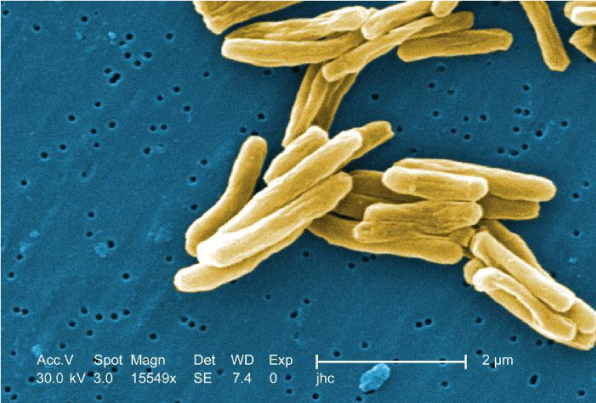
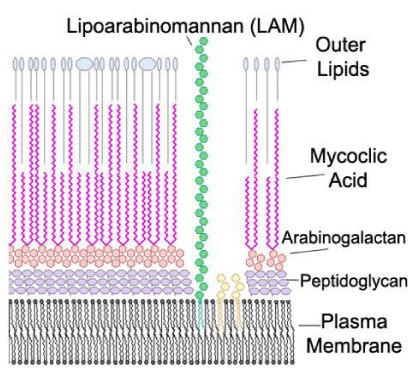
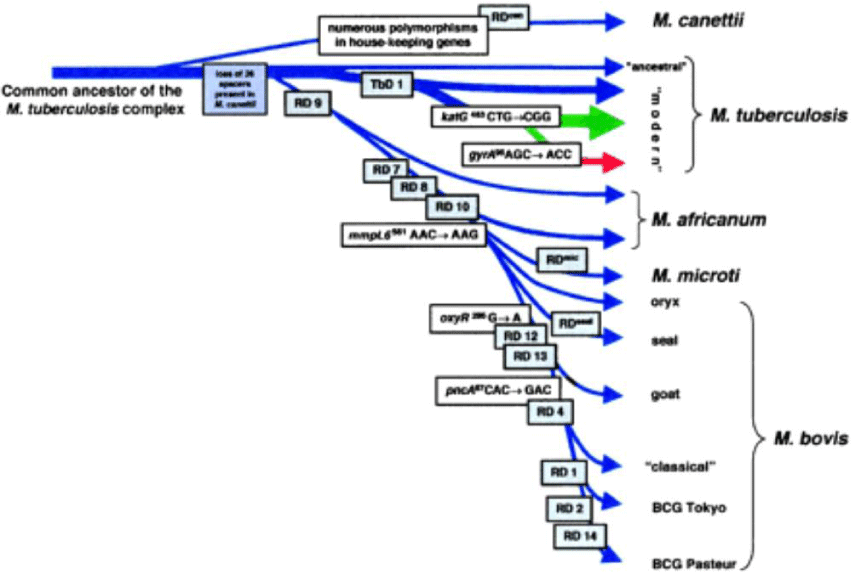
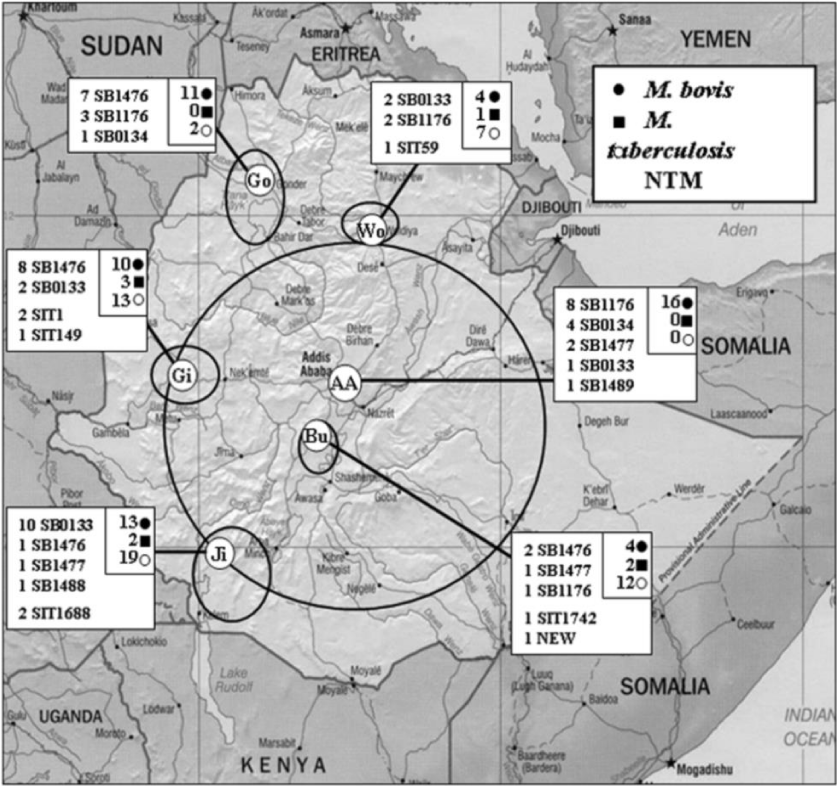
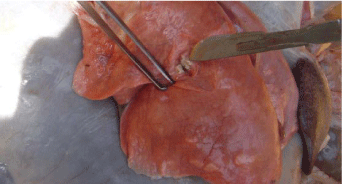

 Save to Mendeley
Save to Mendeley
